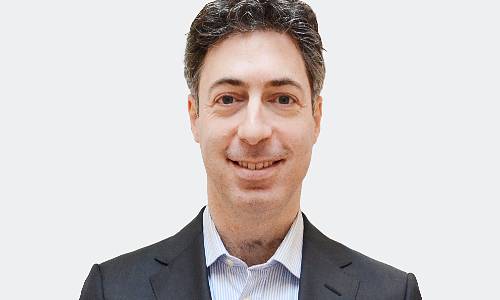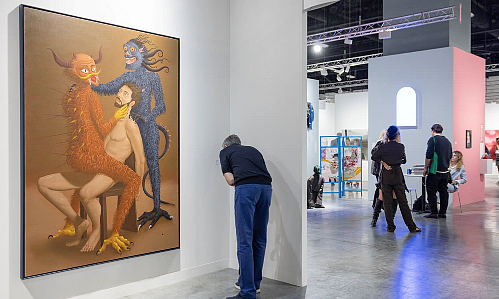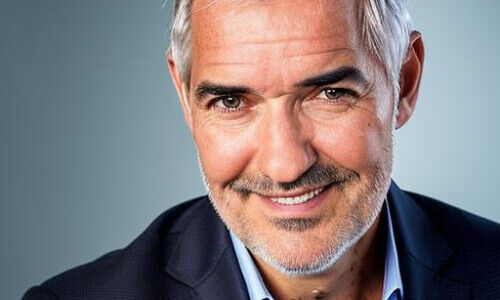Swiss banks are full of art, and yet the understanding of art as an investment is often not very advanced. The startup of an ex-banker seeks to change that.
Trading art like stocks is an idea that makes sense to former UBS executive Andrea Orcel who is a board member of the internationally active art exchange Artex.
Pascal Schneidinger (pictured below) has dedicated himself to the idea of turning paintings into investments. What he has in common with Orcel is that both made a career in the world of finance, in his case at Credit Suisse First Boston, Deutsche Bank, and private equity firm Starwood Capital. But the two finance professionals differ fundamentally in their approach.
Shades of Private Equity

(Image: Partasio)
Artex makes renowned individual paintings capital-marketable and earns money from trading in «art shares», while Schneidinger's startup Partasio, domiciled in the Canton of Zug, focuses on works that ideally never appear on the market. As the ex-banker, who ran a chain of designer furniture stores in Shanghai for ten years, explains, he essentially takes a private equity approach.
«We buy four to six works in off-market transactions with a price tag of $500,000 to $3 million each, bring them together in a portfolio and hold them for five years, and then try to sell the paintings at a premium.» Unlike private market funds, all of the sale proceeds are distributed to investors and not reinvested.
CAT Financial Collaboration
Partasio claims a performance fee from any appreciation of the underlying work, so the company has a vital interest in ensuring that such a gain occurs, Schneidinger points out.
Partasio operates with actively managed certificates (AMC), where the financial products can be purchased by professional investors starting from 30,000 Swiss francs. The company cooperates with Zurich-based financial boutique CAT Financial which manages the certificates, while Partasio acts as an advisor.
First Image Acquired
The first AMC was launched in September with funding and the search for investments underway. The first painting for the portfolio has already been acquired. It is an untitled painting by contemporary German artist Guenther Foerg, acquired for over 600,000 Swiss francs, and well below the price for comparable works by the painter, Schneidinger says.
For the Partasio boss and his partners, art historians Stephanie Schleiffer and Jonathan Levy, Foerg counts among the 40 or so artists worldwide whose work fits into their «blue chip» criteria.
Artistic Blue Chips
The requirements are art that is relevant in the long term in terms of art history and finance, whose provenance can be deduced, and which can be assigned to a liquid segment of the art market. Other blue chips from Partasio's point of view include German painter and sculptor Gerhard Richter and the late American artist Jean-Michel Basquiat.
The response from investors to the new offering has been positive given the challenging stock market situation, says Schneidinger. Still, the question of trust arises when access is opened to a market previously closed to most investors. Nevertheless, art is probably the largest asset class that has a consistently lower correlation with traditional investments which has proven to be highly inflation-proof in recent months.
Swiss Wealth Location
Schneidinger sees his choice of Switzerland as the starting point for his company and is engaging with institutional investors such as asset managers of the Aquila Group and also with a large private bank. «It was clear to me that we had to start at the Swiss wealth location,» he says.
How is the venture being received in the local art scene? «Finance and art are two incredibly different worlds», the ex-banker admits which is why it's important for him to have art-savvy partners in Schleiffer and Levy. Even more than banking, the art trade is a relationship business, where only long-standing contacts open doors.
New Art Collectors
But the market is facing a generational change and has a vital interest in finding new collectors, says Schneidinger.
And last but not least, the finance professional says appearance matters. «Showing up to meetings a la Wall Street would not be effective,» the veteran of New York's financial mecca points out.


































